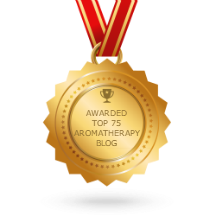Imagine a day trip to Australia. Where would you choose to go? Northern Tasmania? Would you go
to the Bass Strait Islands,
Southern Victoria, or Northern New South Wales?
The low lying swamps, creeks, and behind the sand dunes of these areas
are where one would come across a small tree with papery bark and alternate,
soft leaves. Today we continue our
Australian Essential Oils Series with a species indigenous to these areas. (1)
Rosalina-
Melaleuca ericifolia S. - is of the Myrtaceae family. Rosalina is also known by the common names of
Lavender Tea Tree and Swamp paperbark tree.
Steam extraction is used to draw the oil from the arial parts to produce
the useful oil. (1)
Rosalina,
has two chemotypes. Research has found
that the southern form of this bush is predominately the cineol chemotype,
which is not produced commercially. (2) The more preferred linalool chemotype resides in
the northern parts of the range. When
cut back to ground level, the species grows back readily through suckering,
producing multiple stems. (1)
Major Chemical Constituents in a typical
analysis of the oil are:
Constituent
Average
Range %
Alpha-pinene 7.6
5-10
para-cymene 2.4
1.0-4.0
limonene 2.8
1.5-5.0
1,8 -cineole
23
18-26
Alpha-terpinene 2.6
1.5-4.0
terpinolene
3.4
2.0-5.0
linalool 48
35-55
terpen-4-ol
0.8
0.5-3.5
alpha-terpineol 1.9
1.5-4.0
aromadendrene 1.1
1.5-4.0
viridiflorol
0.8 0.5-3.0
Similar to the oil of M. alternifolia,
difference lies in the major constituent being linalool rather than terpinine
-4-ol. This difference creates an oil
that is less irritating to young skin and offers a softer scent. As linalool is known to be antiseptic,
spasmolytic and anticonvulsant as well as having calming/sedative effects, joined with the anticeptic properties of tea
tree, this creates a very useful oil.
Brazilian researchers have shown that linalool is rapidly absorbed
through the skin and nasal mucosa. (1)
Webb asserts that the oil is beneficial for
upper respiratory tract congestion and infections, especially for small
children. He states that it is a gentle
expectorant with good anti-infection properties, and that topical use on acne,
boils, tinea, and herpes is effective.
As it blends well with most medicinal oils by offering a soft floral
note, it can be used in the bath, in aromatic profusion, and vaporization. Webb notes that he has used it for colds,
flu, sinusitis, skin rash, dandruff, and acne, as well as a local anesthetic
for insect bites and tooth aches. Unlike clove oil, Rosalina only numbs where
applied. (1)
Robert Tisserand indicates no known safety
hazards or contraindications. (2)
Our thanks to guest blogger Sandy Barrett for this series!
Our thanks to guest blogger Sandy Barrett for this series!
References:
(1) Mark Webb.
Bush Sense, Australian Essential
Oils and Aromatic Compounds, Adelaide,
Australia: Griffin Press, 2000.
(2) Robert
Tisserand/Rodney Young. Second Edition,
Essential Oil Safety: Churchill Livingstone,
2013.
---------------------------------------------------------------
My comments: I love the aroma of Rosalina. Our latest batch says "Rosewood" to me. Because of it's high linalol level (and my sensitivity to Lavender) I don't dare use it topically, but I love the aroma. Far and away my favorite of the other, more medicinal smelling, Melaleuca family of oils.
Read more, and order this delightful Rosalina Oil here.
Read more, and order this delightful Rosalina Oil here.




No comments:
Post a Comment